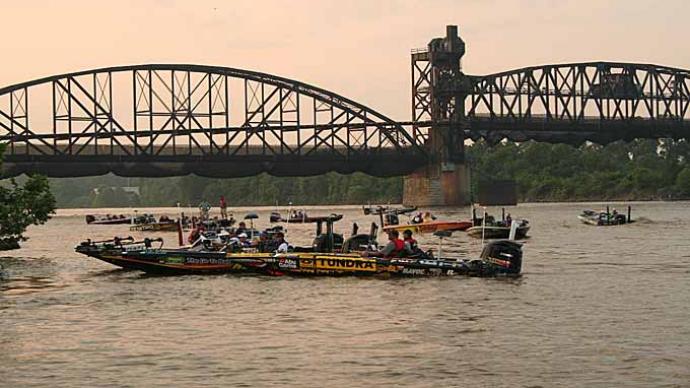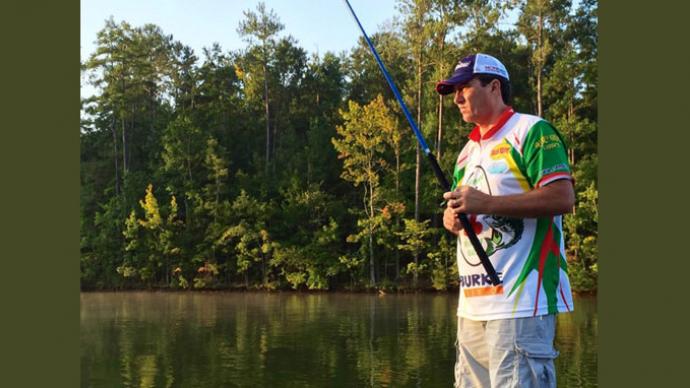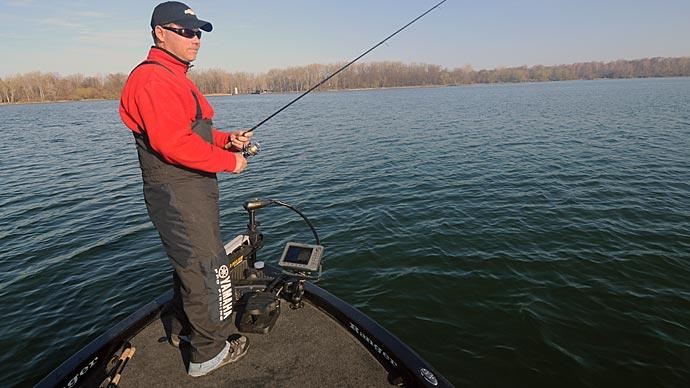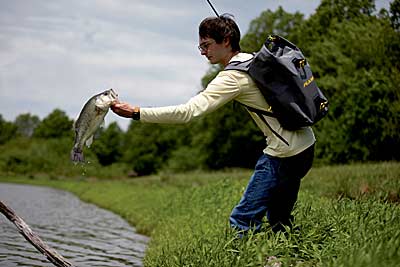
Aaron Martens, Rick Clunn, Gary Dobyns, and Eddie Johns are four of the most consistently successful anglers I’ve ever known. Still, their prowess isn’t due to natural ability, although that does play a part. Aaron was known as a finesse fisherman. People used to say that Rick Clunn was the Zen master of fishing. Gary Dobyns is known as a power fisherman. You may not know Eddie Johns, but if you lived near him, you’d be familiar with his name. He dominates the tournaments in his area. What gives them the edge? Here are easy ways to emulate these anglers and become better fisherman.
1. Aaron Martens – Fish Like A Hunter
The fishing world undoubtedly lost a giant when we lost Aaron. He was not only one of the best fishermen I’ve ever met, but he was also one of the kindest. He also could focus on the job at hand to the exclusion of everything else, which was one of his major strengths. Aaron did one thing that most other anglers don’t do is study not just bass behavior but also the behavior of their prey.
Out west, a lot of the big bass get fat on a diet of not just shad but also craws and stocked trout. Aaron made it a point to study crawdads, shad, and trout. He had a pond where he would watch crawdads for hours. He knew how they reacted to danger and what kinds of cover they liked to live in. He knew where they spent the summer and where they went in the winter. When he fished tournaments in January and February, he’d turn over rocks on the bank to see if there were craws under them and what color they were. Aaron could match that color with a Yamamoto bait no matter what color the craws or baitfish were.
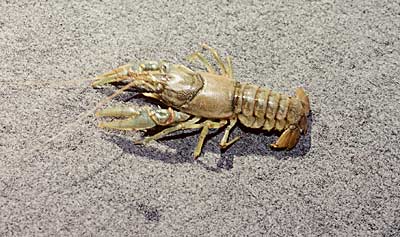
Even better than rocks, Aaron said, is stacked wood. He called it a fish magnet. Since his usual craw-like bait, the jig, snags badly on that, he’d fish wood with a 7-inch Aaron’s Magic worm, Texas-rigged. He would pitch this past the woodpile and shake the weight, keeping it on the bottom and letting it root in the dirt like a craw with the tail dancing. He watched craws, and he knew that when they were feeding, there would be little clouds of mud around them, and he could mimic that with his baits.
From studying crawdads, he knew that a good stretch of a bank that would attract crawdads would have a hard bottom and some broken rocks, with some trees as a bonus. He also knew how easy it was to spook fish because he studied them, so he kept at least fifteen to twenty feet away. The bigger the fish, the warier they are, he said. So he’d stay stealthy and keep back. “Somebody looking for a trophy buck doesn’t sit out in the open,” he said. Aaron did fish like a pro hunter, knowing his prey, their food, and their habits intimately.
He was also very quiet when he fished. He told me that bait presentation and where you keep the boat are only part of it. Don’t stomp around, don’t open and close lockers, and don’t cast right to a target. “Food isn’t going to fall out of the sky,” he said, “so make a quiet cast past the target and drag the lure down to the fish.”
Aaron would bring along his big swimbaits if the lake he was fishing had trout. You must find areas where big fish can hide from trout, he said – standing trees, bushes, etc. He looked for ambush spots like sharp points, especially with a good drop-off or timber. He said big bass will stay along the drop-off and look up, waiting for the trout to swim over them, sometimes in thirty to forty feet of water.
When he fished a swimbait, he tried to picture what the fish were doing. He would make his swimbait act like a scared trout, giving it some good jerks and twitches and making it go fast. Sometimes he made it come back with the tail just out of the water, making a wake. This makes it look like an injured trout.
Aaron had a vast knowledge about not just bass but also what bass eat. This is just one of the things that made him such a fantastic fisherman. You can also strive for it if you want to be a better bass fisherman.
2. Rick Clunn – The Basics
When I first started fishing, Ricky Clunn was THE man when it came to bass fishing. I remember reading that he would sleep on the shore of the lake where he was going to fish to become in tune with nature. That is one of Rick’s keys to success – being so in tune with the fish, the birds, and the environment that he noticed the tiniest details. He told me that it sounds simple, but it’s accurate: bass react to biological stimuli, and they all do the same thing. He employed a three-step method to locate bass no matter where he fished.
Step One is to establish a Seasonal Pattern. This tells you what lake area you should be fishing at a particular time of the year to get the most bites. Developing patterns, Rick says, is your most important asset. Your tackle is just tools, tools that should complement your abilities. Recalling past experiences and reapplying them in the future is the key. Keep records, he says – you are the most reliable source of information. Anything beyond yourself is just degrees of lies. He says it took him a year of keeping notes for it to pay off.
Rick says you don’t mix unlike bodies of water together in your notes – for instance, man-made lakes, rivers, tidal waters, etc. He sectionalized the lake map. Number 1 is the deepest, clearest water. Two would be midrange depth. Three would be the shallow areas, such as rivers coming in. He would divide coves up the same way. Then he would keep notes on what kinds of water he caught fish in at different times of the year. The two main things a seasonal pattern does is eliminate non-productive water before you waste time on it and put you in the places where you’ll get the most bites. You can even use tournament results from magazines. Don’t bother with techniques – you are just interested in where – what area.
Step Two is to establish the Current Pattern in your confidence area (the seasonal pattern gives you this). What are the fish doing right now? Fish the area like you’re fishing a pond. Identify visible objects. Bass, Rick says, are object-oriented fish. 98% of them will be relating to objects. You have less than six types of objects they’ll be relating to. Fish each of them and eliminate them until you find a fish. Work each kind thoroughly. Get the feel until you have done it efficiently.
There are two different types of Current Patterns: individual fish or a concentration pattern. One big stump may have one or two fish. That’s an individual pattern. If you’re on this, you must duplicate it by looking for big stumps. Moving from one to another is a milk run. If you find an area of flooded brush, vegetation, etc., holding schools of fish, you should stay there. This is usually not individual objects; it’s masses of objects. The individual pattern is the most common, says Rick. Don’t waste time fishing between the patterns when you find the pattern. Go from object to object on the big motor.
Step Three is one that he finds very few people consciously do – it is something that elite fishermen do. This is what he calls the Specific Pattern, and anglers who do a lot of flipping are most likely to do this without thinking about it. Finding that salt cedars hold fish is a current pattern. A specific pattern is knowing what limb the fish is on. The first fish you catch tells you where they are, he says. You need to listen to the fish. This is where being in tune with things comes in. Awareness is all-important. Visualization is critical, he says. “Get down on the bottom with the worm. Talk the worm back to the boat, and you’ll be right there when he hits it.” Rick says you must exercise mental awareness like a physical attribute.
A caveat – when conditions change, it’s time to start over and find the new Current Pattern.
3. Gary Dobyns – It’s All In Your Head
“Dock Talk” is the bane of every fisherman. There are probably very few fellow fishermen you are willing to believe when they tell you what the bite is, right? Gary knows this better than most, and over the years, he’s had a pretty good time trying to psych other fishermen out, and he’s been psyched out in return. He and Dee Thomas were famous for messing with each other’s heads. This was good-natured, but other times weren’t so friendly.
Dobyns has had competitors send their friends to pound his water the day before a tourney or do incredibly rude things on the water like wake his boat, go between him and shore, etc. Maybe you’ve had guys do that too. My partner and I were on the spinnerbait bite of a lifetime once at Lake Pleasant in a tiny cut that no one had the slightest interest in until we started catching fish there. Before long, we were crowded with boats, and one guy even hit our boat with a lure. It’s crazy.
Gary says you need to remember that you CAN NOT fish someone else’s fish, even if they tell you precisely what, where, and how. You need to find your fish, then ignore the dock talk because the odds are that they are trying to mislead you, especially if they are tournament anglers.
Another crucial thing (which was hard for Gary) is to learn to ignore it when you’re being baited and keep your cool. If you start getting ticked off, they won. The key is to remain focused on the job, regardless of what is happening around you or what is being said. A guy might cut you off to try to make you mad. If you get mad, it ruins your day. A huge part of fishing is mental, says Gary, whether you fish tournaments or not. I’m sure you’ve noticed that if something is worrying you, you don’t fish as well. You must be mentally tough and just let everything roll off your back. Gary says fishermen have changed, and people are likelier to be rude and nasty these days. Just let it go.
There are mental exercises like meditation that can help you learn to focus on your fishing and ignore negativity. Some sports psychologists can help a lot if you have a problem with anger and want to get back at people. Rick Clunn called it “being in the zone.” Be focused on your fishing to the point where you almost don’t notice anything else. It takes practice, but you can do it. Your fishing will be vastly improved.
4. Eddie Johns – Fishing By The Book
Keeping a log is something that Hank Parker told Eddie Johns about many years ago. The question was, “what is something you can tell me to help my fishing that would help everybody?”. Parker told him to write it all down and don’t let anybody else look at it. The fish will be in the same place every year.
At first, Eddie just wrote down dates and where he caught fish. But now he knows how the moon affects fish, so his book has gotten very detailed. He logs water temperature, air temperature, fronts, and weather changes for two to three days before the fishing trip. He notes what did NOT catch fish – areas, baits, etc. Sometimes he writes four or five lines, but he has gotten more detailed as time goes on.
Eddie has organized his book by months. The book is now giant, but he can quickly determine what he should be doing (a very detailed Seasonal Pattern) by finding the lake he’ll be fishing in the book for the month he’ll be there. It’s easy to zero in on current conditions and match them to notes in the book, so he knows where to go and what to throw.
He says you don’t have to be as detailed as he is, just a few little lines. He keeps a little notebook in the boat and jots things down, and he also takes photos when the water is low and puts them in the book. He doesn’t use a computer because he doesn’t trust them. He started keeping it on his phone, but it fell overboard, and he lost four years of notes. So paper is the way to go, and he does his research in The Book before he goes to the lake. He’s got 15 to 20 lakes in the book now. He NEVER writes down what anybody else says.
Here are the types of things he records: lake, date, launch, water temperature, wind direction at the time of catch, weight, location of each fish, sunrise, bait, depth caught at, which direction the boat was going, what color worked, the weight of sinker if any, hook, details about structure – for instance, if rocks, smooth, jagged? He also draws a little map if it helps make it more clear to him. Keeping the book has made him more focused. He pays more attention to the environment and the lake because he knows he’ll be writing it down. It makes him notice things. He jots down notes in the boat just enough to jog his memory so he can write them when he gets home.
Here’s the thing: everyone wants to see Eddie’s book, but only 1 out of 100 guys will take the trouble to keep one themselves, and it is the easiest thing that will make the most difference in your fishing. It gives you confidence, and confidence is a good thing. If you don’t mind using electronics for your book, plenty of fishing log apps are available.
The Takeaway
Maybe you’ve noticed that the things these elite anglers do tie into each other. Paying attention to the fish, what’s happening in nature around you, focusing on your fishing and ignoring distractions, learning about the fish and the prey – all these things help give you confidence and focus. These are all things that any angler can do, and they will make you a better fisherman.


